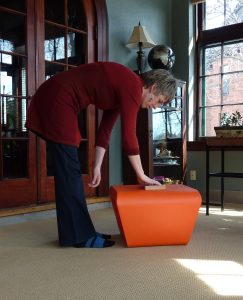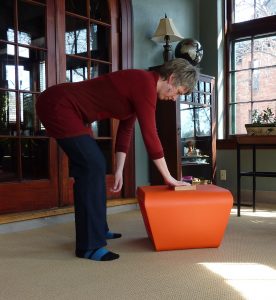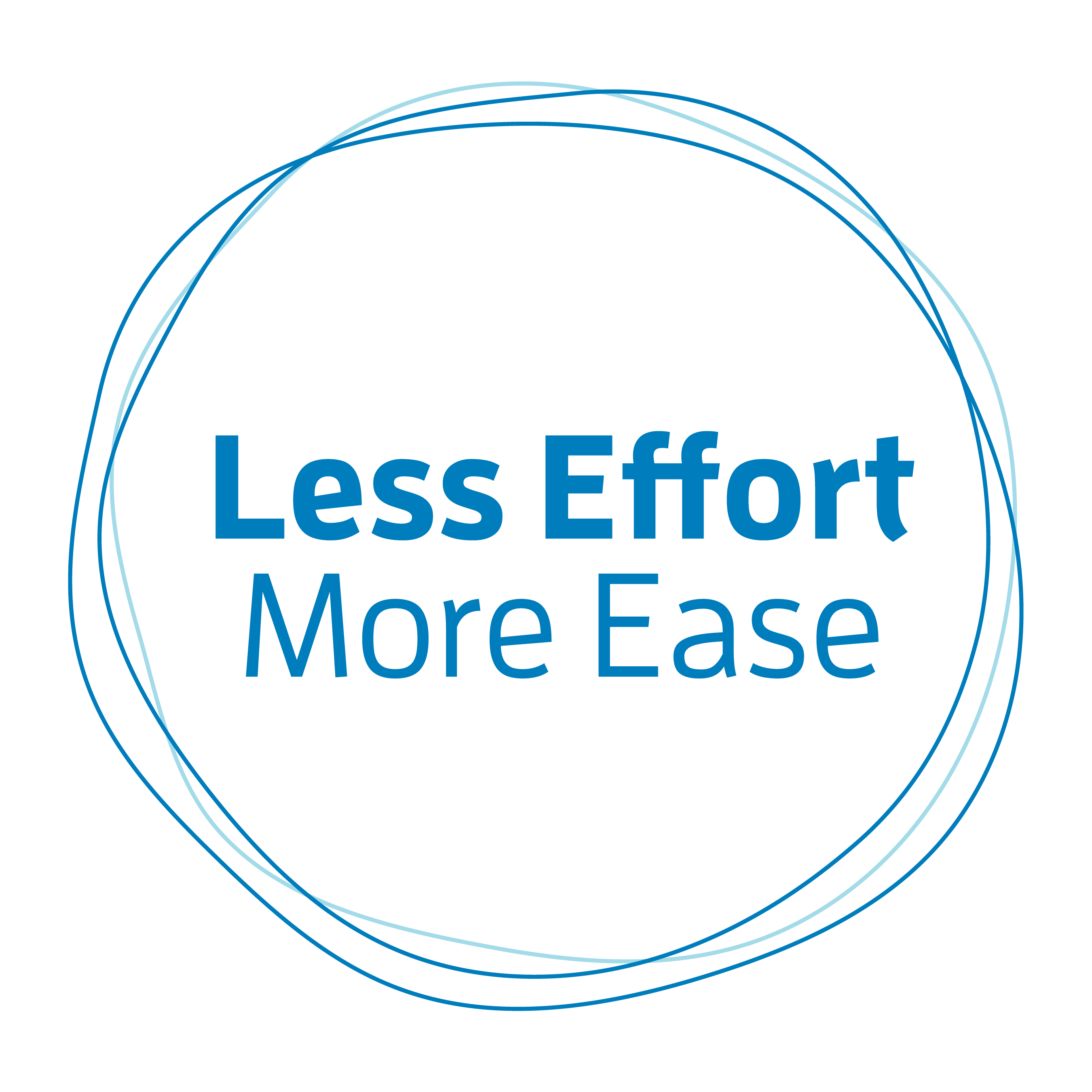For most of your life you probably never thought much about bending over. You just did it. Yet as you’re getting older you may find yourself avoiding doing certain activities because they involve too much bending and it’s “hard on your back”. I don’t think it has to be.
Imagine going through a single day without ever bending over. What would you be able to do? Not much. This simple movement lowers your body in space usually so you can do something with your hands and arms. Pick the napkin you dropped up off the floor or retrieve your purse from the seat of a chair—gotta bend over to do that. Clean the toilet, get a drink from a drinking fountain, splash cold water on your face—gotta bend over to do that. Pet the neighbor’s adorable terrier, pull that one weed out of the flower garden, load dishes in the dishwasher—yep, gotta bend over to do that as well.
Bending over is a fundamental human movement. But it doesn’t have to become a problem for your back. You just need to know a few basic things.
#1 Learn to hip-hinge
Bending should happen at your hip joints, not your waist. This will keep your back lengthened and put less stress on your spine. So, let’s make sure you know where those hip joints are.
First, put your hands “on your hips”. Think wonder woman. This is not your hip joints. When you put your “hands on your hips”, you’re resting them on the top of the hip or pelvic bones. You have a very convenient shelf there to rest them on. This is also the area you call the waist—and it’s often where you bend from. But the waist isn’t a joint. It’s a place to put your belt. The spine is flexible there, but it’s not designed to bend from like your hip joints are. Bending over at the waist repeatedly may be putting unnecessary stress on your spine.
Your hip joints are further down where your legs join your torso. Stand up, march in place, and slide your fingers into the crease the legs make with the torso in front. For ladies, this is the bottom of your underwear in front; for guys, if you wear a speedo this would be at the bottom of the speedo in front. Notice how much further down your hip joints are compared to when you had your “hands on your hips”.
Explore bending over by gently bending your knees a bit (how much will depend on how tight your hamstrings are on the back of your legs) and hip-hinging or folding deep in the groin at the hip joints in the front. Using your fingers to gently nudge yourself to fold lower down can be useful as you practice. Your tail will stick out more than if you simply bend by rounding your back at your waist. A warning: this new way will feel strange and maybe even “wrong” at first and probably like you’re sticking your butt out. These feelings are just part of changing your habitual way of bending. The more you practice, the more “normal” it will feel.
The first picture below shows me bending at my waist. The picture at the top of this article also shows a woman bending at her waist. Notice the rounded back, straight legs, and well, I sort of look like a cashew nut. The second picture shows me hip-hinging. Notice how much longer my back is and that I’m bending my knees somewhat because my hamstrings are a bit tight and I look a bit more like an inclined tabletop, and not so much like that nut.


#2 Use your third leg (no, not that third leg!)
Even if you’re hip hinging, bending over with your head and trunk leaning way out in front of your legs and feet is taxing on the muscles along the back, especially if you’re in that position too long.
Often you may be bending over and only need to use one hand to do something. What do you do with the other hand? Try putting it on something—your thigh, or the seat of a chair.
When I clean my toilet, for example, I have one hand on the toilet helping to support me, while my free hand cleans the toilet with the brush. When I need to bend over to put a bunch of things in the dishwasher, I use one hand on the counter to help support my back, while my free hand places the plate in the dishwasher. The arm and hand that supports me is my “third leg”—and yes, I do enjoy the double entendre. When I garden, I often hip hinge and place my forearm on my thigh for support as I use the opposite hand to pluck a weed.
#3 Stop before you start
I’ve saved the most important for last.
All of this information on how to bend is great but only if you use it. As soon as you think about bending over to reach for something you’ll start to go into your habitual way of bending. The only way to change is to stop before you even start—so you can think about how you want to do what you want to do. Let me tell you a little story.
Many years ago, I had a client who worked alongside her husband who was a photographer. She went with him to his photoshoots and did a lot of lifting of heavy equipment. She’d fallen on her right hip and lower back three years before coming in to work with me and had been dealing with pain in that area ever since. One of the things we worked on together was how to bend in a way that protected her lower back instead of aggravating it. I taught her how to hip-hinge.
But to do this while she was working, she had to give herself the time and space to stop and think about how she was going to bend and pick something up before she did it. Otherwise, she would just do it the old habitual way, which was aggravating her back and hip.
One day she told me that for several weeks she’d been complaining to herself while on the job. Her inner monologue went something like this: “I don’t have the &#%!ing time to think about how to bend and lift this equipment! If I stop and think, I’ll never get all this work done!”
After a while of this, she’d realized that it was taking up time to tell herself repeatedly that she didn’t have time—time that she could be using instead to stop and think. And that is what she did. She stopped telling herself over and over she didn’t have time. And all of a sudden she found the time to stop and think through the movement.
She found time—by stopping doing one thing that was wasting her time (the inner monologue “I don’t have time”) and in its place was just enough time!
***
If you feel that bending over is “hard on your back” you’ve got a very strong incentive to change. If you keep doing things the way you’ve always been doing them, don’t expect to get different results. (Wasn’t that Einstein’s definition of insanity?)
Start with something manageable. One place where you bend over several times each day. For example, to fill and empty the dishwasher, to pick up and put down a pet’s water dish, or to pick up your purse off the bench by the door where you always leave it. Pick one place and every time you come to that place, use it as an opportunity to stop. Only by stopping completely will you have the opportunity to catch yourself from starting to go into your old bend and choose to explore the new way.
Start with one small place in your day and changing the old way of bending will be more manageable over time. Slowly find other places in your day to work on stopping and trying your new way of bending. After a while, you’ll find it more and more natural without thinking about it so much.
As always, be curious and patient with yourself. Have fun exploring.
This short article—The Lost Art of Bending Over—touches on the concept of hip-hinging that I mentioned in this post and is worth a read. It also has a good visual of hip-hinging.
Image by Anja🤗#helpinghands #solidarity#stays healthy🙏 from Pixabay
P.S. Are you a subscriber to my e-newsletter? If you like this blog and are craving more information on how to move better and feel better there’s no better time to sign up. You’ll get a free booklet with tips for exploring your posture (that has nothing to do with standing up straight and pulling your shoulders back. I promise!). And once a month I’ll pop into your inbox with new ideas for you to experiment with. In addition, you’ll be the first to know about any upcoming events, local or online.




